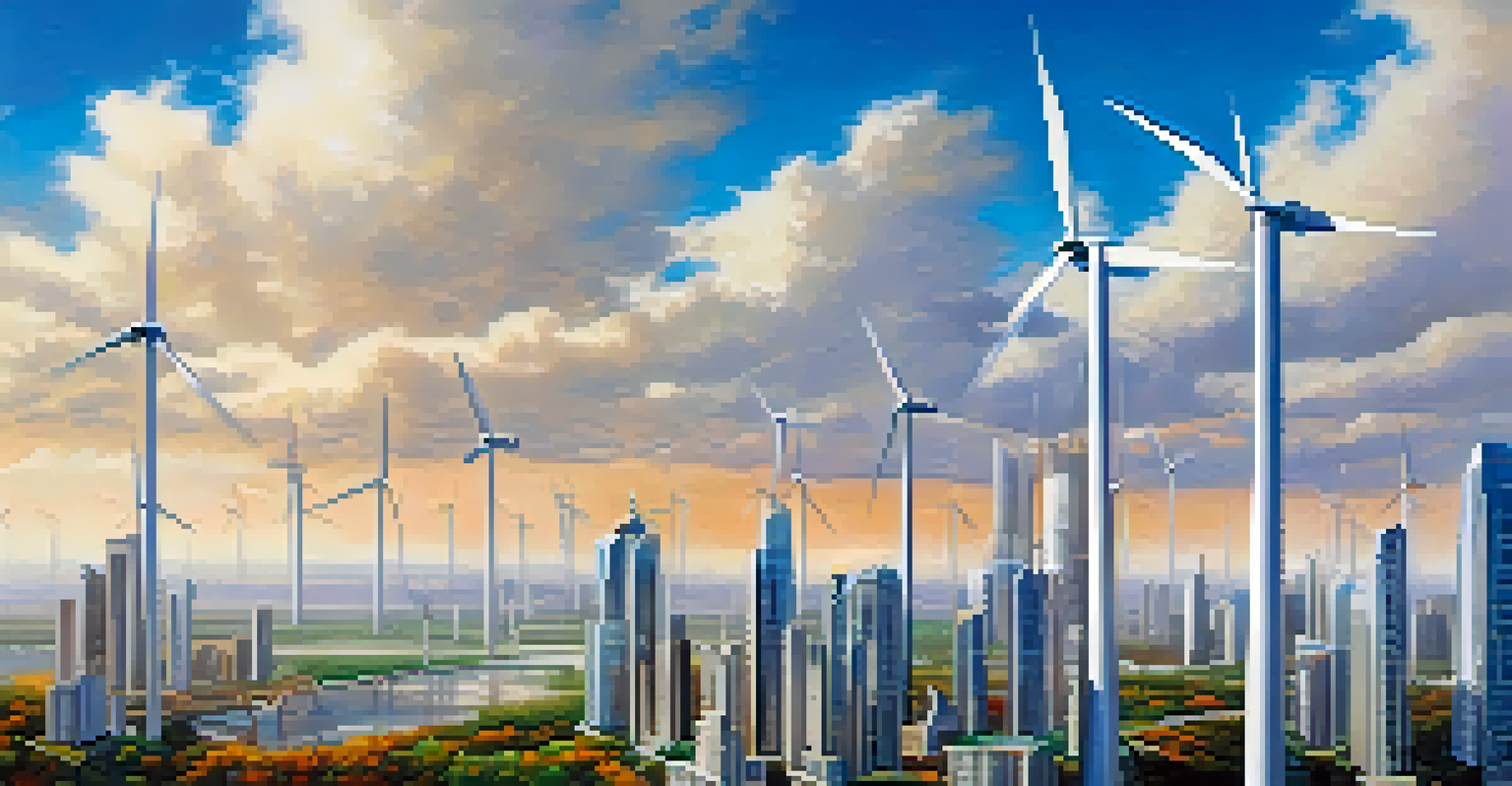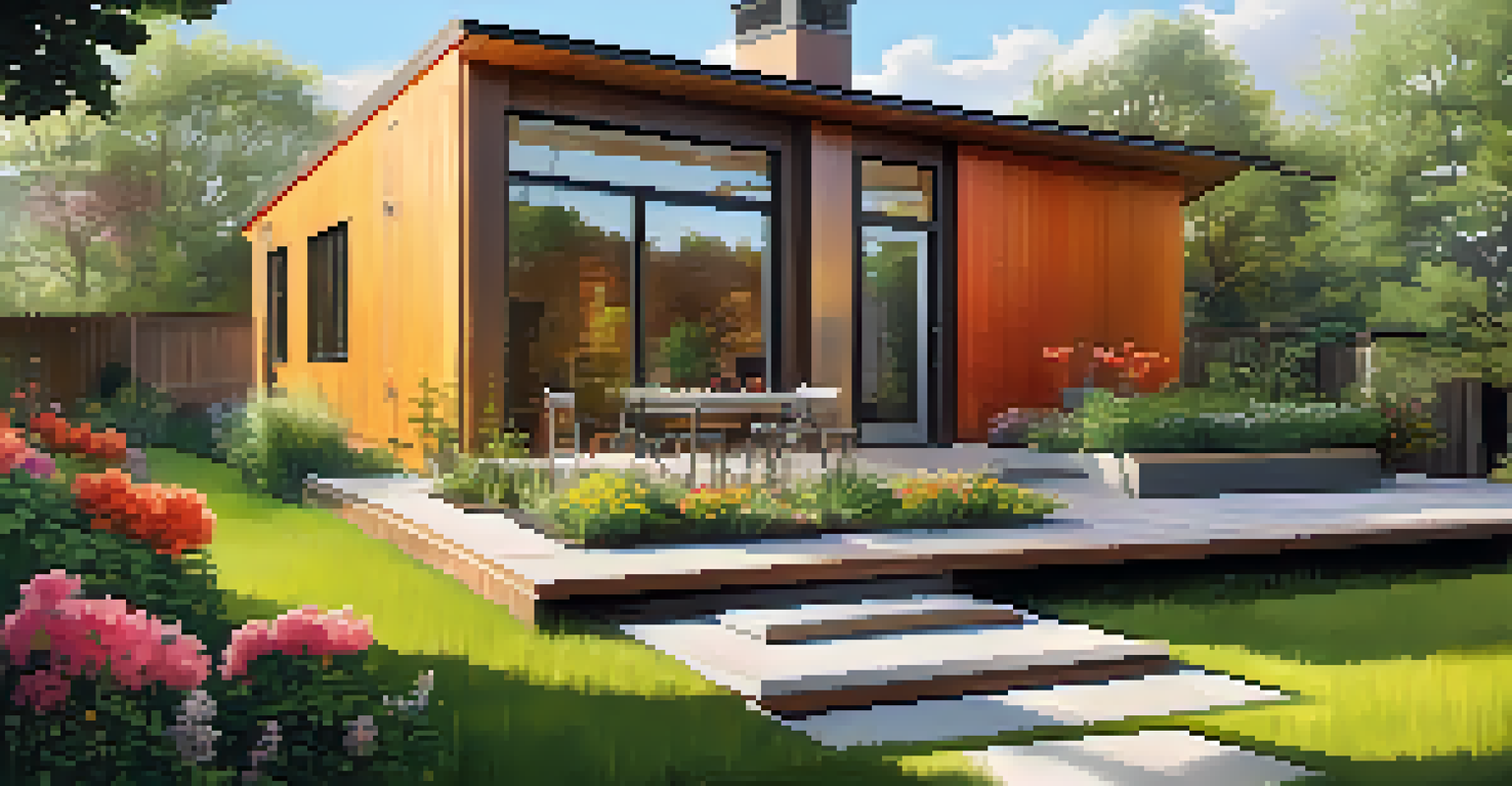Integrating Renewable Energy Systems into Building Designs

Understanding Renewable Energy Systems in Architecture
Renewable energy systems are technologies that harness natural resources, such as solar and wind, to generate energy. These systems are becoming increasingly important in building design as we strive for sustainability. By integrating these systems, architects can create structures that are not just energy-efficient but also environmentally friendly.
The use of renewable energy is not a choice but a necessity to ensure the sustainability of our planet.
For instance, solar panels can be installed on rooftops, allowing buildings to harness sunlight to power their operations. Wind turbines can also be incorporated, especially in taller structures, to capture wind energy. These resources provide alternative energy solutions that can significantly reduce a building's carbon footprint.
Moreover, understanding the various types of renewable energy systems is crucial. Each system has unique benefits and can be tailored to specific building needs, ultimately promoting energy independence and sustainability in urban environments.
Benefits of Integrating Renewable Energy into Buildings
Incorporating renewable energy systems into building designs offers several benefits, primarily cost savings and environmental impact. By generating their own energy, buildings can reduce reliance on traditional power sources, leading to lower utility bills. Over time, these savings can offset the initial investment in renewable technologies.

Additionally, buildings that utilize renewable energy contribute to reducing greenhouse gas emissions, making them more sustainable. This not only helps combat climate change but also enhances the overall quality of life for residents and the surrounding community. As more people become environmentally conscious, having a green building can increase property value.
Benefits of Renewable Energy Systems
Incorporating renewable energy technologies reduces utility costs, lowers greenhouse gas emissions, and enhances building resilience.
Furthermore, integrating renewable energy can enhance a building's resilience. During power outages or energy crises, self-sufficient buildings can continue to operate, providing safety and comfort to inhabitants. This resilience is becoming increasingly vital in today's unpredictable climate.
Designing for Solar Energy: Key Considerations
When integrating solar energy into building designs, orientation and placement are crucial. A building's roof should ideally face south to maximize sunlight exposure, which is essential for solar panel efficiency. Additionally, the surrounding environment should be considered to avoid shading from trees or other buildings that can limit energy production.
Sustainability is about ecology, economy, and equity.
Architects often employ design strategies such as overhangs and awnings to optimize solar gain while preventing overheating during hotter months. This balance is essential for maintaining comfortable indoor temperatures and minimizing energy consumption from cooling systems.
Lastly, integrating solar energy systems requires a thorough understanding of local regulations and incentives. Many regions offer tax credits or rebates for solar installations, which can significantly reduce costs and encourage more sustainable building practices.
Wind Energy in Urban Building Designs
Incorporating wind energy into building designs is particularly beneficial in urban areas with high wind speeds. Small-scale wind turbines can be installed on rooftops or integrated into the building's architecture. These systems can supplement energy needs and reduce reliance on grid power.
Designing for wind energy requires careful consideration of the building's height and location. Taller structures can capture more wind, making them ideal candidates for wind turbines. Additionally, the turbine's design should blend seamlessly with the building's aesthetics while ensuring optimal performance.
Key Design Considerations for Solar
Effective solar energy integration requires careful attention to building orientation, shading, and local regulations.
However, it's essential to address potential noise and visual impact concerns of wind turbines in densely populated areas. Proper placement and innovative designs can mitigate these issues, allowing for a harmonious integration of wind energy into urban landscapes.
Energy Storage Solutions for Renewable Systems
Energy storage systems play a critical role in maximizing the benefits of renewable energy. They allow buildings to store excess energy generated during peak production times, ensuring a steady power supply even when generation dips. This is particularly important for solar and wind energy, which are inherently variable.
Common energy storage solutions include batteries and thermal storage systems. For instance, battery systems can store electricity for later use, while thermal storage can keep heat for heating water or spaces. Both solutions enable buildings to optimize energy usage and enhance sustainability.
Integrating energy storage also provides resilience during power outages. Buildings equipped with storage systems can continue to function independently, offering safety and comfort to occupants when the grid is down.
Building Codes and Regulations for Renewable Integration
When planning to integrate renewable energy systems, it's crucial to navigate building codes and regulations. Many municipalities have specific guidelines regarding the installation of solar panels, wind turbines, and energy storage systems. Understanding these regulations ensures compliance and helps avoid potential setbacks during the construction process.
Moreover, some regions offer incentives for incorporating renewable energy, which can significantly offset installation costs. Familiarizing oneself with these incentives can provide financial benefits and promote sustainable building practices.
Future of Renewable Energy in Design
Advancements like building-integrated photovoltaics and smart building technology are shaping more sustainable and efficient architectural practices.
It's also essential to engage with local authorities early in the design process. Collaborating with them can streamline approvals and help identify any additional requirements or incentives available for green building initiatives.
Future Trends in Renewable Energy and Building Design
As technology advances, the integration of renewable energy systems into building designs is expected to evolve. Innovations such as building-integrated photovoltaics (BIPV) are becoming more popular. These systems seamlessly incorporate solar panels into building materials, such as windows and facades, enhancing aesthetics while generating energy.
Additionally, the growth of smart building technology is paving the way for more efficient energy management. Smart systems can optimize energy usage based on real-time data, improving overall efficiency and sustainability. This trend allows buildings to adapt to changing energy demands dynamically.

Looking ahead, the combination of renewable energy and smart building technologies will create even more resilient and sustainable structures. As we continue to prioritize sustainability in our designs, the future of building architecture looks promising.